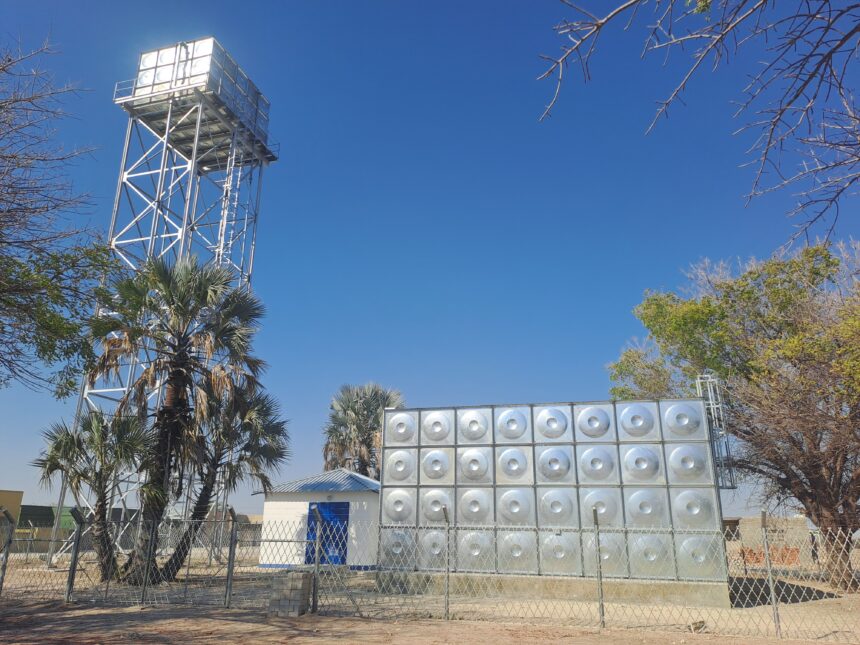Hilma Hashange
The water shortage at Omuthiya will soon become a thing of the past after the town received two bulk water storage facilities.
The reservoirs can supply water to residents during emergency water shortages.
The storage facilities were officially handed over to Omuthiya Town Council by ALV Consulting Engineers, who were contracted to construct the water storage facilities, which include a ground steel tank, a pump house and an elevated steel tank.
The reservoirs will cater to residents at Extensions 3 and 5.
The construction of the facility at Extension 3 commenced in February 2023 to the tune of N$5.8 million.
The ground steel tank has a capacity of 1 045 cubic metres, while the ground steel tank at Extension 5 carries a capacity of 523 cubic metres, and was constructed at a cost of N$3.8 million.
Speaking at the handover of the keys to the two facilities, Omuthiya CEO Petrus Shuuya said the construction of the water reservoirs was necessitated by the shortage of water supply to the town during the maintenance of water pipes connecting Omuthiya to the rest of the northern towns.
“We want to make sure that there is enough water reserve, whenever we need it. At least now we can proudly say that we can go up to five days if anything happens to NamWater pipes between Oshakati and Omuthiya, and we are quite confident that we will still have water.
“Before we had these reservoirs, if anything happened to the pipes, we only had a few hours of water supply. Now, we have improved that situation to increase from a few hours to five days or more of water supply,” Shuuya said.
Gabes Nghishunga, the building inspector at Omuthiya Town Council, echoed Shuuya’s sentiments, indicating the town did not have reservoirs, hence the need to construct bulk water storages.
He said the council plans on constructing an additional water storage tank at Extension 8.
“The town’s water is pumped from Oshakati – and because we are at the receiving [end], the water pressure is low when, for example, a pipe bursts. We then realised that water can be stored for even a week while the pipe is being maintained,” he added.
Cetus Nyongesa, an engineer at ALV Consulting Engineers, explained the tanks automatically switch on when the water supply is low, and pump water to the affected households.
“We have put water in the ground tank – and when it is needed, it needs to be pumped up through a pumping mechanism. The system is automatic, so there is no need for it to be switched on manually by someone,” said Nyongesa.
*Hilma Hashange is an information officer at MICT Oshikoto.


